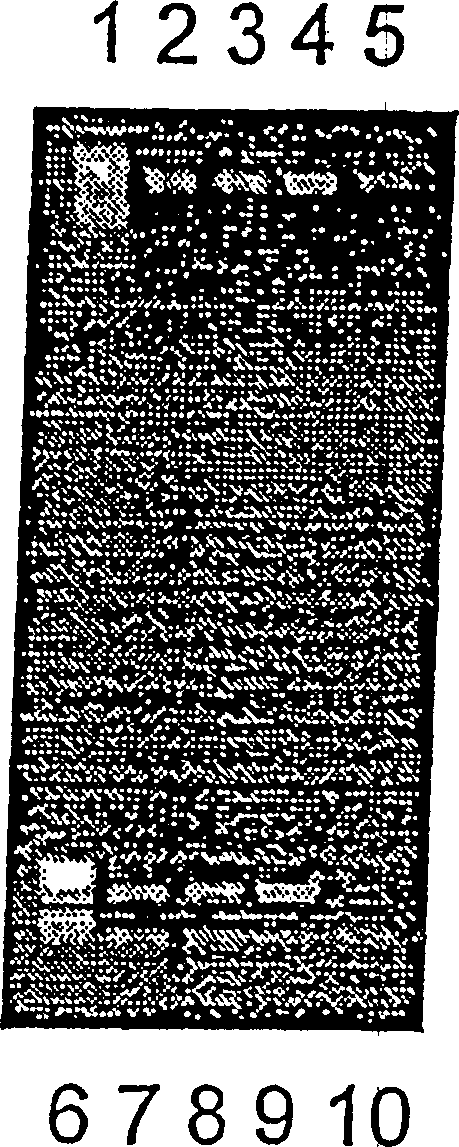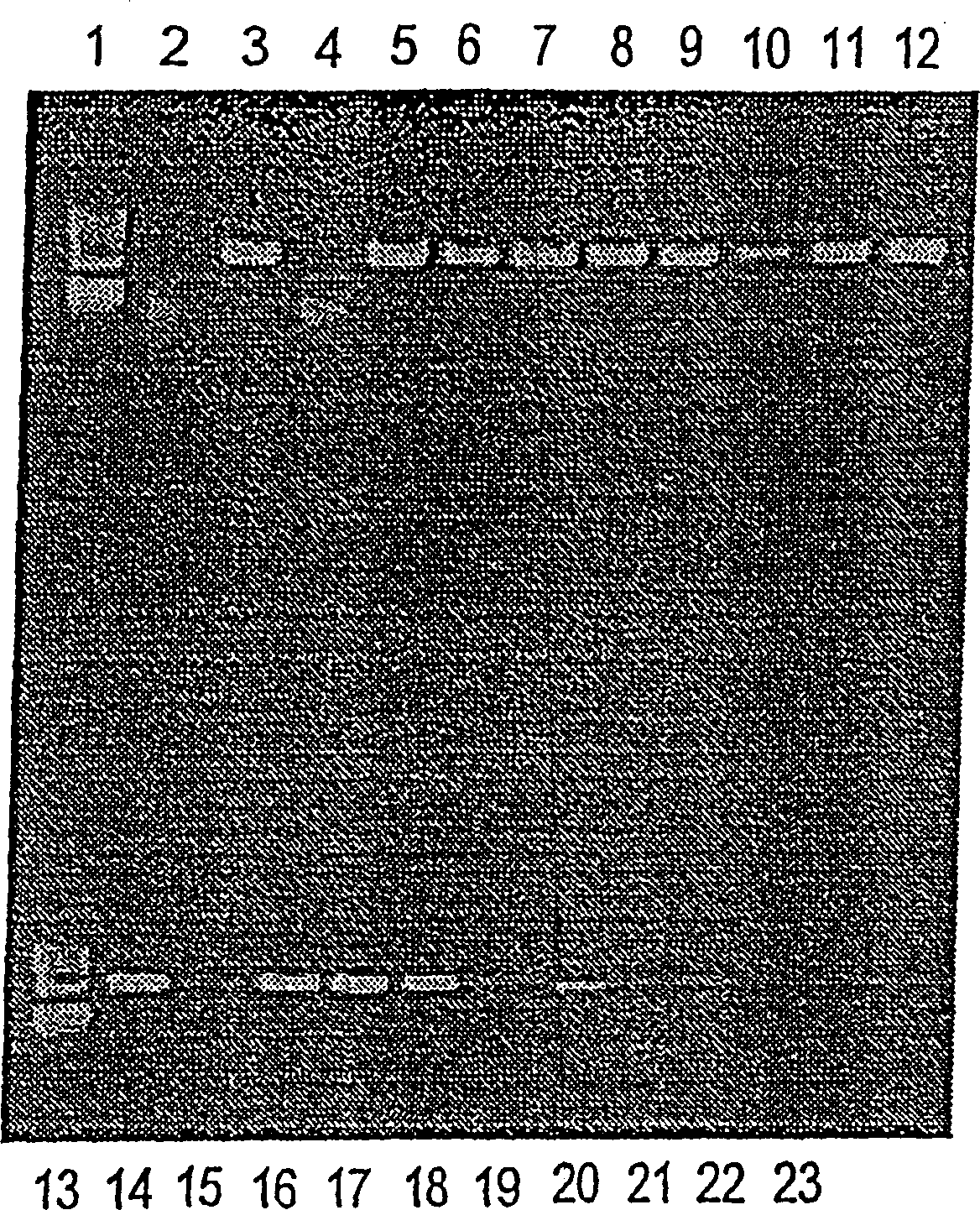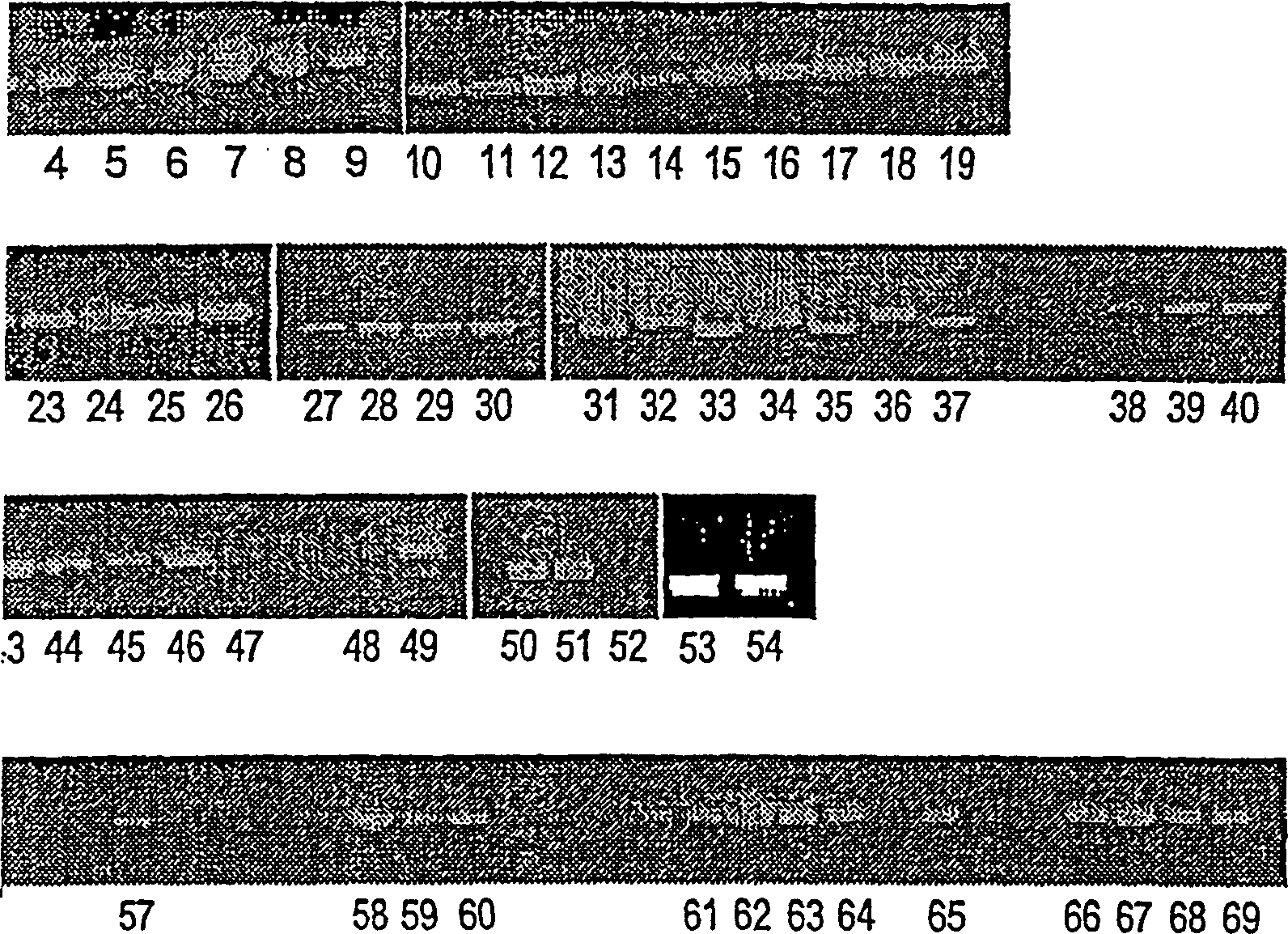Cell isolation method
A cell and target cell technology, applied in the field of separation of bacteria present in samples, can solve the problems of inability to lyse, block filters, inaccuracy, etc., and achieve the effect of favorable binding ability, flexibility and cost advantages
- Summary
- Abstract
- Description
- Claims
- Application Information
AI Technical Summary
Benefits of technology
Problems solved by technology
Method used
Image
Examples
Embodiment 1
[0136] Preparation of carbohydrate-coated particles and testing of cell-binding properties
[0137] Compounds were coupled to M-PVA OCN-activated beads (Chemagen AG). reaction:
[0138] Bead-NCO + R-OH →
[0139] Activated beads Sugars with hydroxyl groups Carbamates of sugars (urethar)
[0140] The modified beads were incubated with different bacterial cultures, either pure undiluted cultures (o.n.) or diluted in water or buffer (PBS). To investigate cell binding, DNA was isolated from bacteria-bead complexes and subjected to PCR analysis. Reference: WO98 / 51693. Chemagen is used for this coupling reaction and the resulting modified beads are used in the separation method of the invention as described herein.
Embodiment 2
[0142] Method for isolating bacteria on beads and identifying specific bacteria
[0143]Bacteria were grown overnight at 30°C without stirring in 100 ml of tryptone soy broth. 800 microliters of PBS (binding buffer) and 10 microliters of beads of the invention (10 mg / ml) were mixed, then 100 milliliters of the overnight culture was added, pipetting with a pipette, and stirred gently. The supernatant was removed using a magnetic separator, and the bead-bacteria complex was resuspended in 50 microliters of lysis buffer (4M guanidinium thiocyanate-1% sodium lauryl sarcosine). The sample was opened and incubated at 65°C for 5 minutes.
[0144] Then add 100 microliters of 96% ethanol, and continue to keep the lid closed for 5 minutes. Remove the supernatant with a magnetic separator and wash the DNA sample twice with 1 mL of 70% ethanol.
[0145] Resuspend the bead-DNA sample in 45 μl water and incubate uncovered at 65°C for 15 minutes to remove all traces of ethanol (or add 5 μ...
Embodiment 3
[0152] The protocol of Example 2 was followed with M-PVA beads on which D-mannose was coupled.
[0153] Beads are shown to bind Bacillus, Escherichia coli (pathogenic and non-pathogenic), Listeria, Salmonella, Yersinia.
PUM
 Login to View More
Login to View More Abstract
Description
Claims
Application Information
 Login to View More
Login to View More - R&D
- Intellectual Property
- Life Sciences
- Materials
- Tech Scout
- Unparalleled Data Quality
- Higher Quality Content
- 60% Fewer Hallucinations
Browse by: Latest US Patents, China's latest patents, Technical Efficacy Thesaurus, Application Domain, Technology Topic, Popular Technical Reports.
© 2025 PatSnap. All rights reserved.Legal|Privacy policy|Modern Slavery Act Transparency Statement|Sitemap|About US| Contact US: help@patsnap.com



